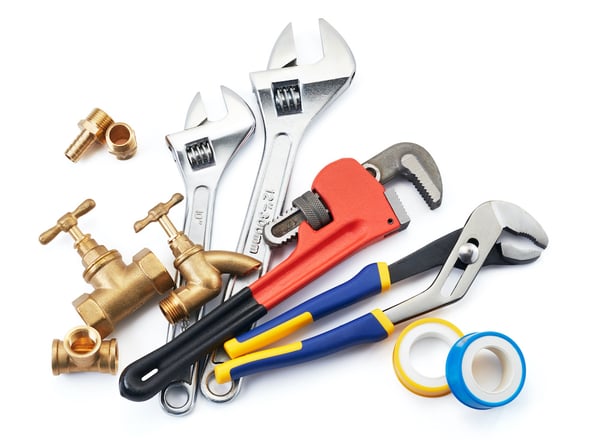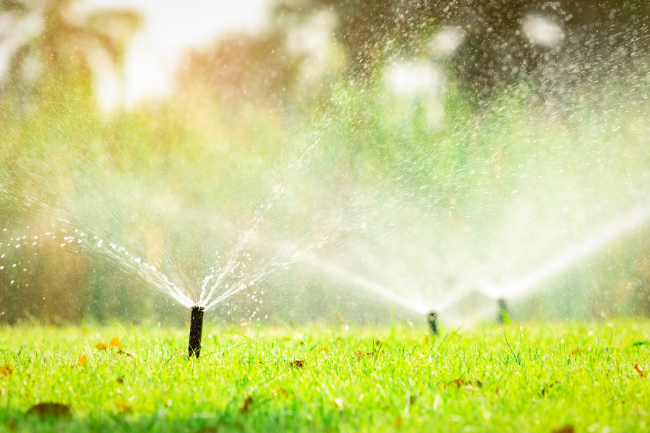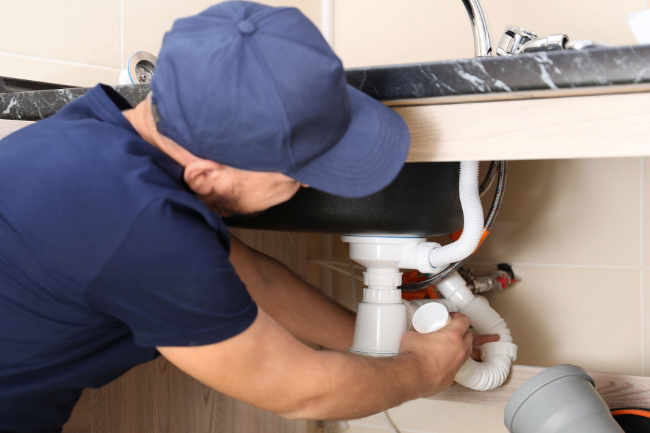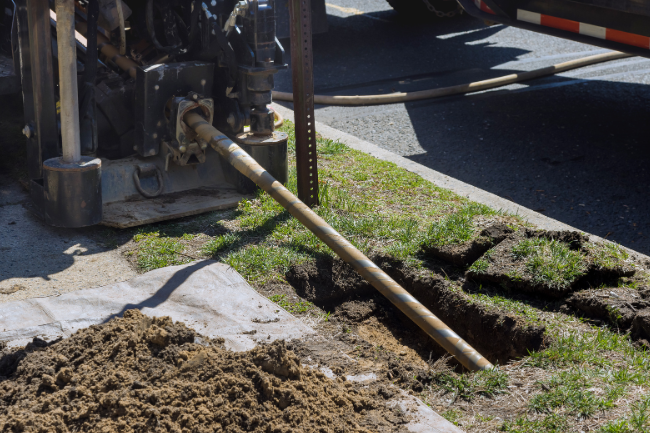Top 11 Best Plumbing Tools for Homeowners
Posted by William Heinselman on

When you move into a new home, you may find yourself rapidly accumulating tools for various household projects. Even the least handy homeowners usually have a few screwdrivers or hammers to tend to minor issues. Maintaining your home’s plumbing, however, can be a little more complicated due to the variety of specialized tools required. While you may not plan on replacing your toilet flapper, fixtures, or sink drains, it’s good to have a variety of plumbing tools on hand so you can deal with minor issues that may not be serious enough to require a professional plumber.
With that in mind, here are 11 plumber tools that every homeowner should have on hand. While none of these tools can replace the expertise of a professional plumber, they can be tremendously helpful when it comes to minor DIY projects around the house.
Top 11 Plumber Tools You Should Have in Your Home
Need some suggestions for your home's toolbox? These tools are sure to come in handy for most, if not all, small-scale plumbing problems.
1. Pipe Wrench
Perhaps one of the most vital tools for any plumber’s collection is the faithful pipe wrench. Basically, this all-too-familiar tool tightens and loosens pipes, and fittings. The serrated teeth of these wrenches help the wrench keep a firm grasp on the fixture—good plumbers will wrap a cloth around the jaws of the wrench as to not damage your fixture's finish.
It's important to note that the tool is not intended for hardened steel hex nuts or other fittings, as they would ruin the head. Still, if a hex nut is soft enough that it becomes rounded beyond use with standard wrenches, a pipe wrench is sometimes used to break the bolt or nut free. If you’re not sure about whether it’s safe to use a pipe wrench, it might be time to call for backup.
2. Adjustable Wrench
As you'll see, wrenches are extremely important in plumbing work, and the adjustable wrench is another essential part of the ensemble. Versatile and highly effective, the adjustable wrench is a required tool for working on supply lines, compression fittings, and other plumbing parts that come equipped with hex-shaped nuts. It's vital that your plumber’s adjustable wrench is able to hold a firm setting, so that it won't become loose under heavy torque. Like the pipe wrench, most plumbers have two adjustable wrenches, large and small.
There are many forms of adjustable wrenches—taper locking wrenches, which need a hammer to set the movable jaw to the size of the nut, to the more contemporary screw, adjusted wrenches. Some wrenches even automatically adjust to the size of the nut. As mentioned, simpler models use a serrated edge to lock the movable jaw to size, while more sophisticated versions of the tool are digital, and use feelers to set the size of which it should open.
3. Basin Wrench
Sink faucets are often held into place by specific types of nuts, and your plumber is going to need the ideal wrench for tightening and loosening them—this wrench being the basin wrench. Its lengthy shaft and swivel jaw is able to reach up and into the narrow space behind the sink, and grip onto the nuts. Interestingly, there's really no other tool that is able to accomplish what the trusty basin wrench can.
4. Tongue-and-Groove Pliers
Although you may not think so, pliers are a truly essential part of a plumber's tools. These specific types of pliers are actually the most common tools that plumbers go to when they need to grab, pull, hold, tighten, loosen, or twist something. They have serrated jaws generally 45 to 60 degrees from the handles, and the lower jaw can be moved to several positions by sliding along a tracking section under the upper jaw. Plumbers tend to like this tool because the pliers can adjust to quite a few different sizes without the distance of the handle growing wider, which often creates a hand-gripping problem.
5. Plunger
Even if you’re not planning to undertake any DIY plumbing work, every home should have a plunger. Arguably, the plunger is the most important weapon in a plumber’s artillery. As you already know, plungers are necessary for dislodging clogs from toilets, sinks, tubs, showers, and floor drains. It's important to clarify the difference between a sink plunger and a toilet plunger, and that is the sink plunger looks like a ball cut in half, while the toilet plunger tends to take a shape more resembling a trash can cover, for instance. When using a plunger, push it down firmly to create a tight seal around the drain and then quickly pull up. This will create a vacuum effect and unclog the stubborn blockage.
6. Hacksaw
Contrary to popular belief, plumbers don't simply plunge drains, take piping apart, and put it back together —sometimes they actually have to cut through piping, hardware, screws, bolts, and nuts. For this, a hacksaw is implemented. Plumbing hardware can be unusually sturdy, so it's important that your plumber keep a spare blade on hand, just in case the current one breaks. When dealing with tight spots, you can wrap one end of a loose blade in a cloth to create a handle, to slip the blade in for the cut.
7. Metal File
After cutting metal piping, it can be a little rough around the edges, to say the least. So, a metal file is often used to smooth these edges. To do the job well, you should probably have a couple of these in your collection—perhaps a rounded tapered one, and a rounded one with a flat surface.
8. Plumber's Snake
Also called a hand auger, this drain-clearing tool is essentially a 25-foot long flexible steel cable that's effective at clearing clogs from showers, tubs, sinks, drain lines, and toilets, but it seems to be most commonly used in shower and tub drains. When the plunger fails to clear a clog, this is usually the next tool you should reach for.
9. Tubing Cutter
This tool appears very similar to a C-clamp, and it offers a quick, clean way to cut a copper pipe. Your plumber ought to have a standard-size tubing cutter, as well as a close-quarter mini-cutter, which is ideal for tight spaces. It’s perfect for making a quick DIY pipe connection, allowing you to cut pipe cleanly without leaving any jagged edges that could prevent a clean seal into fittings.
10. Plumber’s Tape
Also known as Teflon tape, this tape is essential for sealing up threaded plumbing connections. Made from a material called PTFE (PolyTetraFluoroEthylene), plumber’s tape is thin and silky, which allows it to mold into the threads of metal piping and plumbing fixtures to prevent water from seeping from the connection. It also provides some lubrication to allow fittings to thread into one another more smoothly. While not absolutely necessary for combining threaded pipe fittings, using plumber’s tape will create a better seal that promotes longevity. Individual rolls are also quite inexpensive, making it an easy addition to any plumber’s toolkit.
11. Garbage Disposal Wrench
If you use your sink’s garbage disposal often, there’s a fair chance you’ve had your unit back up and clog on you at one point. Digging inside your unit with a utensil to free the blockage is nowhere near the most effective solution; instead, try using a garbage disposal wrench, or conventional allen key set, to clear troublesome disposal jams. At the bottom of your unit, insert the wrench into the keyhole and turn counter-clockwise and clockwise until the unit is cleared, and debris loosened.
Lawn and Irrigation Tools

Irrigation system rain sensors are absolute essentials for the environmentally conscious. While there are several sensor models and configurations you can find, they typically act on the same principle: either a water-catching cup or affordable and fully automated. Rain sensors limit unnecessary water consumption during rainy months, which means huge water bill savings for you, the homeowner.
In addition to rain sensors, soil moisture sensors can help you cut back on over-watering your lawn, and in turn, driving up monthly water costs. These sensors measure lawn moisture by detecting neutron properties of water within the soil, as well as electrical resistance indicative of moisture. Affordable and easy to install, soil moisture sensors can help you determine whether your soil is too dry, too moist, or just right for your lawn and plants.
Also, the irrigation controller you select for your home can have a big effect on how efficiently you use water. Don’t buy the cheapest controller available - extra features and capabilities can go a long way. Look for a controller that includes the following features:
- Multiple start times and programming
- Remote capabilities
- Calendar options
- Percentage adjustment
Need a Professional Plumber? Contact Express Sewer
Although these tools may not allow homeowners to handle the most severe plumbing problems, they are invaluable for dealing with day-to-day issues that don’t require professional assistance. When a leak, clog, or broken pipe becomes too much of a challenge for the average DIYer to handle, that’s when it’s time to pick up the phone (or just ask “Alexa”) and contact a professional.
Express Sewer & Drain brings many years of experience and a longstanding track record of outstanding customer service to any problem we encounter. When your Sacramento area home or commercial property needs the very best, we’re ready to spring into action. Contact us today to learn more about how we can help.
Topics: Trenchless Technology, Home Plumbing


![Repiping Your Sacramento Home [6 Steps]](https://157832.fs1.hubspotusercontent-na1.net/hub/157832/hubfs/plumbing%20tools%20and%20blueprints.jpeg?width=550)




